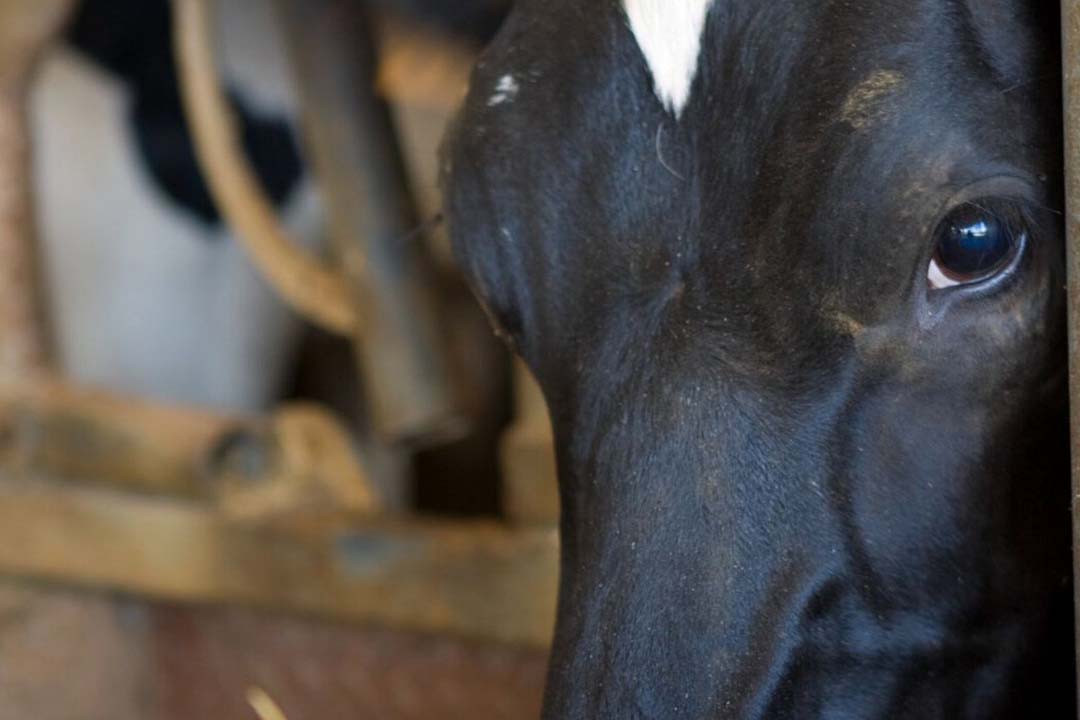In the running to win prestigious UK dairy competition

Music festival entrepreneur and milk producer Michael Eavis is in the running to win this year’s prestigious National Milk Record (NMR) Royal Association of British Dairy Farmers Gold Cup. Sir Michael, who has been awarded a knighthood in the New Year King’s Honours list for services to music and charity, is one of 4 finalists, with the winner being announced at Dairy-Tech next month.
Eavis is no stranger to the competition, having been a previous winner in 2014, but the Worthy Farm holding has changed considerably in the past decade to the adoption of new technology. His 500 Holstein dairy cows, which are producing more than 6 million litres of milk a year from an average of 12,000 kg a cow at 4.06% fat and 3.42% protein, are all milked through a robotic rotary milking parlour. Milk goes to cheesemaker Wyke Farms, less than 10 miles away, and a third of their supplies are made into Worthy Reserve Cheddar and sold to retail outlets.
With Eavis now in his 80s, the farm at Pilton, Shepton Mallet, Somerset, is managed by John Taylor and his wife Pam, with the focus on maximising milk from forage with cows grazing for more than 100 days of the year. They only take one cut of grass silage a year from the 315-ha (780 acres) farm in mid May, with slurry being the only fertiliser used.
The single cut is due to the festival as each June more than 170,000 music fans gather on the farm for the festival. Permanent grassland is required to sustain such footfall and is a carbon sequester. The grassland recovers for the remained of the year, with some grazing and some broadcast reseeding as the site is cleared.
Renewable and new technologies
Improving their sustainability has also been achieved by investing in an aerobic digestor with a long-term innovative ambition to dry slurry to a prilled, exportable fertiliser.
Further developments connected to this aerobic digestor plan include involvement with new technology which could provide a renewable vehicle fuel, which will result in an exhaust emission from their vehicles that is just water. They have also embraced renewable technologies and rainwater harvesting to take the farm ‘off grid’. Solar panels power the enormous rotary parlour’s electricity requirement, and rainwater filtration is used to keep the panels clean for optimum voltaic production as well as providing farm drinking water.

Breeding and milking
Breeding and achieving a high-health herd is key in the farm’s quest for sustainability. Cows are artificially inseminated to Holstein Friesian and all heifers are served by selected Aberdeen Angus bulls. Due to the herd yield, the voluntary waiting period has been extended to 80 days before first service, and this has proven invaluable for conception rates and the reduction in the requirement to use hormonal treatments.
Sexed semen has been used to generate sufficient heifers for herd expansion, and they are now at their 500-head capacity. The requirement for heifers has been reduced, leaving more to breed to beef. They use their latest genomic dairy sires from Alta, which are updated on a quarterly basis.
Herd health is a key focus in the herd. Johne’s screening is carried out quarterly via NMR’s Herdwise service using the milk sample collected at recording. They have also worked hard to reduce the use of injectable antibiotics for mastitis over the past few years. Each cow is treated individually, with bacteriology performed on persistent cases to target treatment, alongside the use of NSAIDs/pain relief for each case. Somatic cell count averages at 178,000 cells/ml.
The new parlour has had a significant impact on the reduction of mastitis cases. It proves that consistent and clean parlour routines, albeit robotic, make enormous headway in combating the spread if mastitis. Current antibiotic usage sits at 32.8mg/PCU.
Lameness
Staff are also strongly encouraged to report any cases of lameness, with all cow’s mobility scored daily. Any cow scoring above a 0 is segregated from the herd, treated within 48 hours, given pain relief and allowed to rest in a loose straw yard. Preventative measures are key for the farm and a foot trimmer is contracted every two weeks to trim around 40 cows, in particularly those about to be dried off. Lameness is rarely digital dermatitis, and the new parlour has helped reduce sole ulcers because the animals spend less time standing.
As a direct benefit from the festival, Worthy Farm welcomes visitors all the year round and has embraced the opportunity to deliver education in agriculture through the conversion of the old milking parlour into a purpose-built education facility known as the Alice Rooms.
The farm is u against 3 other dairy operations:
- Graham Farms, Drumgoon Manor, Maguiresbridge, Co Fermanagh, Northern Ireland
- Bisterne Farms, Sandford, Ringwood, Hampshire
- Joe Ives, Herriard, Basingstoke, Hampshire
Join 13,000+ subscribers
Subscribe to our newsletter to stay updated about all the need-to-know content in the dairy sector, two times a week.










